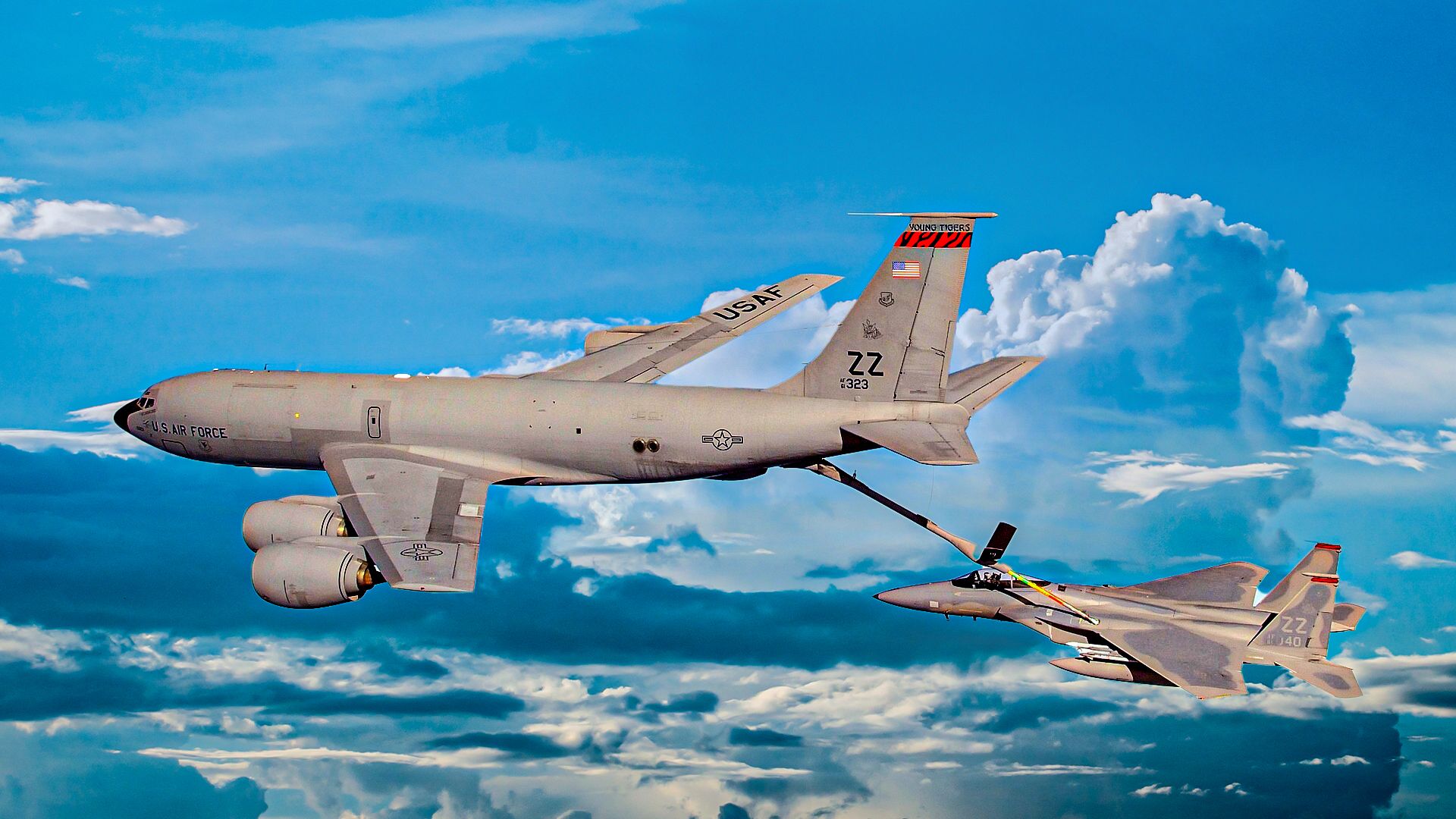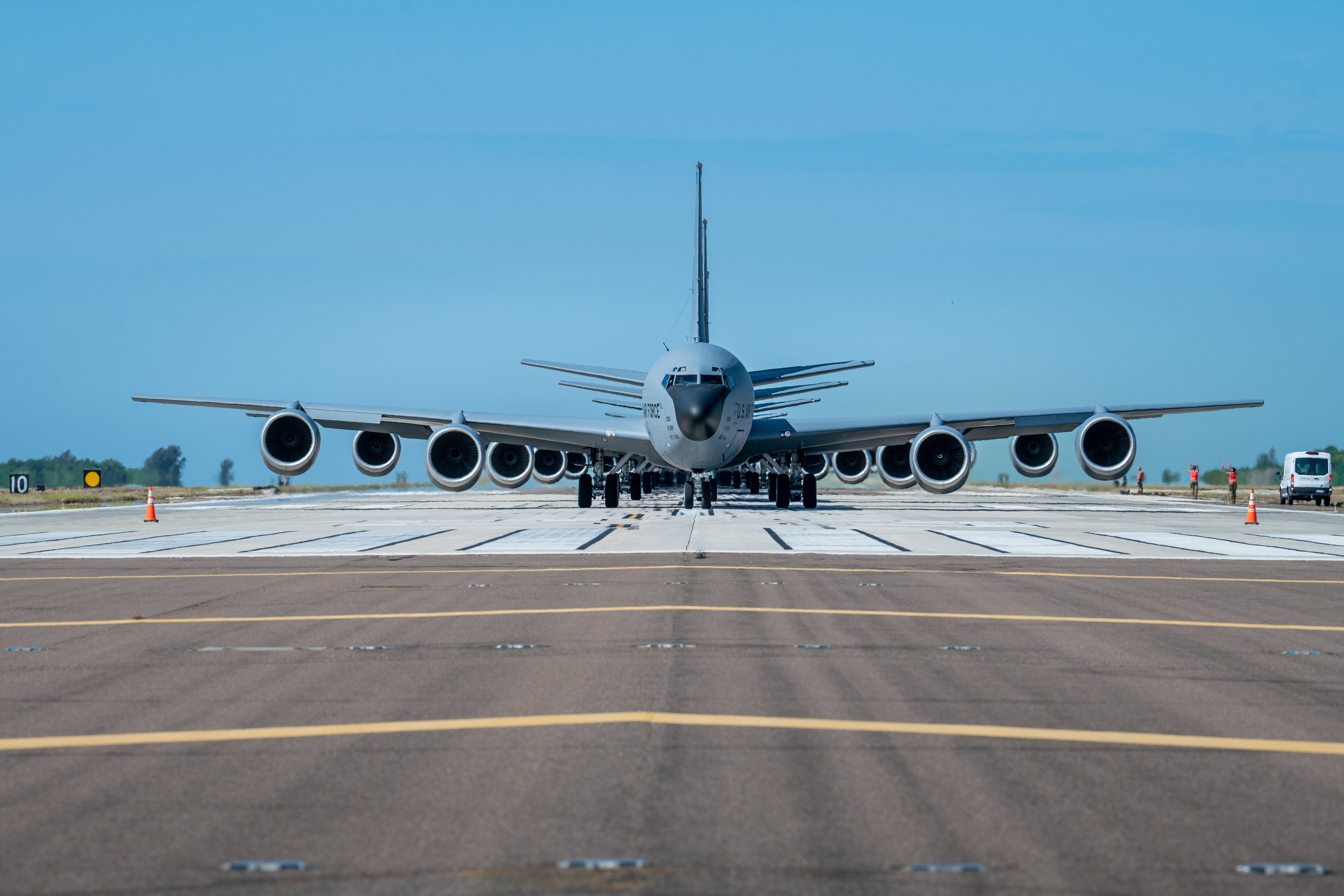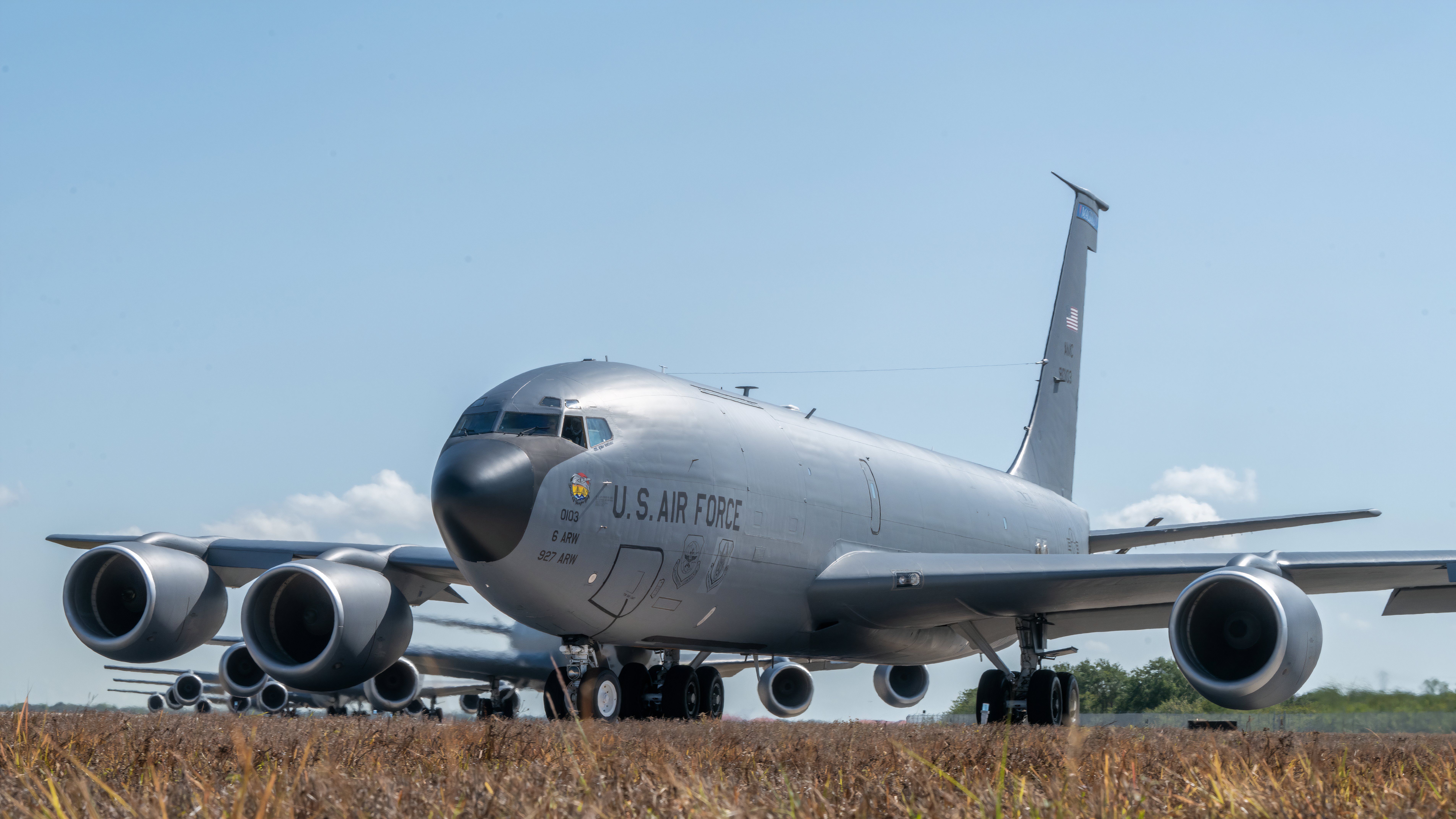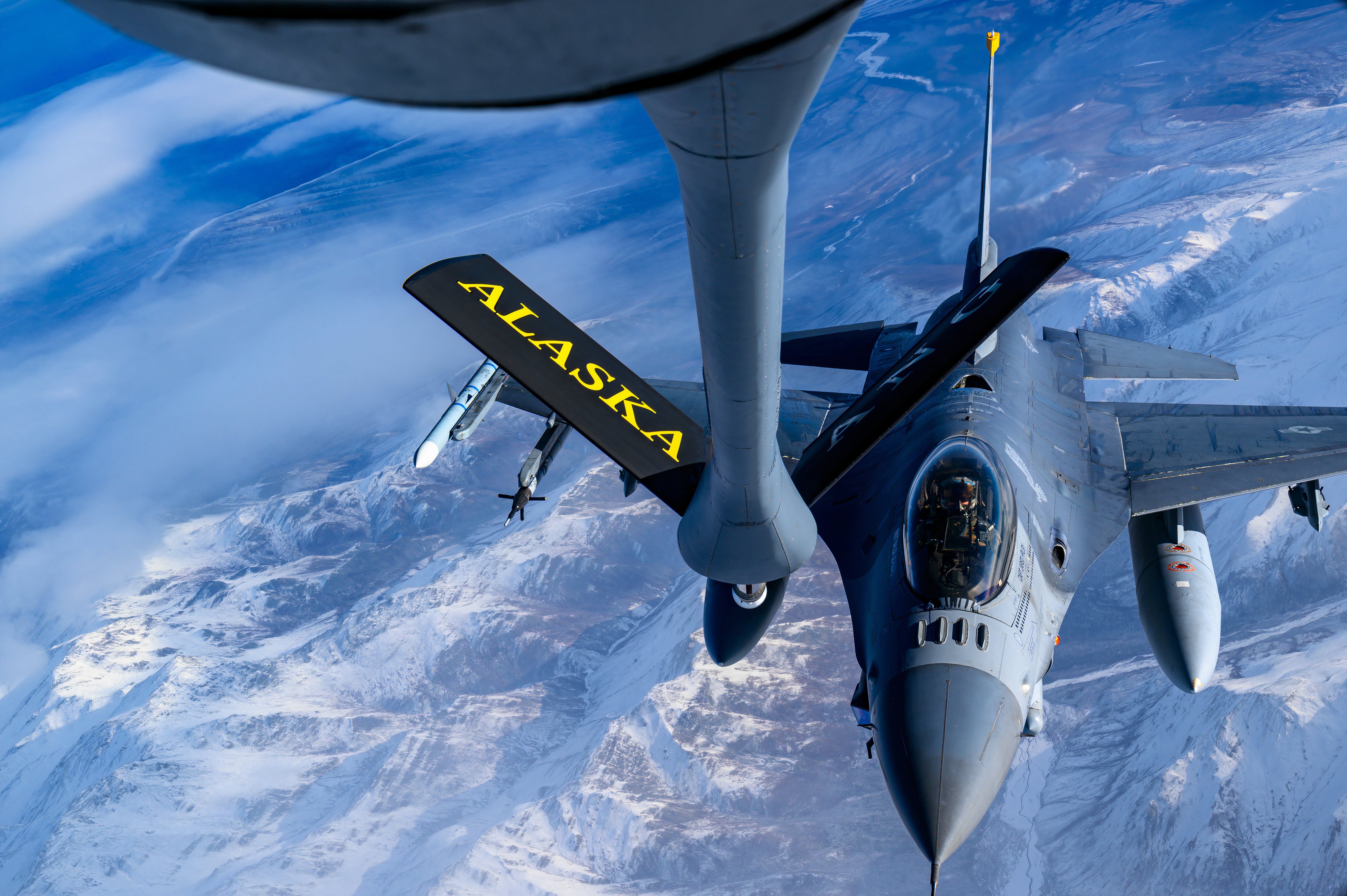Summary
- The KC-135 Stratotanker has been the USAF’s main aerial refueling asset since the 1950s, initially supporting SAC’s long-range bombers.
- The aircraft has undergone engine refits and avionics upgrades, improving efficiency and capabilities over time.
- After delays, cost overruns, and refueling boom issues, the KC-135 will be replaced by the Boeing KC-46 Pegasus; however, the Stratotanker will remain in service for at least another decade.
For more than sixty years, the KC-135 Stratotanker has been the backbone of the United States Air Force’s aerial refueling capabilities. Initially developed in the 1950s to support Strategic Air Command (SAC) long-range bombers, it gave the Boeing B-52 Stratofortress the ability to strike targets anywhere on the planet.
The KC-135 Stratotanker made its maiden flight on August 31, 1956, at Renton, Washington, and entered service with the United States Air Force (USAF) at Castle Air Force Base in Atwater, California, on May 18, 1957. Today, 398 KC-135 Stratotankers are serving with the USAF, of which 156 are in service with the USAF, 70 with the Air Force Reserve, and 172 with the Air National Guard.
How did the KC-135 Stratotanker come about?
The first American aerial refueling tanker was the KC-97 Stratofreighter, based on the Boeing B-29 Superfortress heavy bomber. It entered service with the USAF on July 14, 1951, but was already outdated as the USAF began replacing piston-powered planes with jets.
Photo: USAF
The KC-97 Stratofreighter’s four Pratt & Whitney R-4360-59 Wasp Major 28-cylinder air-cooled radial piston engines ran on high-octane gasoline, while jet-powered aircraft needed kerosene (jet fuel). This meant that the KC-97 was required to have separate fuel tanks: one to power the plane and a separate tank of kerosene to refuel jets. The KC-97 Stratofreighter’s cruising speed was 230 mph, which meant that the refueling jets had to fly at much slower speeds to link with the refueling boom.
The solution to the problem was to build a jet-powered tanker that was not only faster but also needed to carry a single type of fuel for itself and the planes it was refueling. In 1954, the USAF’s Strategic Air Command (SAC) asked aircraft manufacturers to submit proposals and bids to address the issue.
Photo: USAF
The winner was the swept-wing rear-engine Lockheed L-193 Constellation II. Boeing’s proposal was an aerial refueling version of its existing Boeing 707. Because the Boeing 707 was already in service, the USAF ordered several tankers as an interim measure. The planes proved to be up to the job, and rather than wait for the Lockheed L-193, the USAF canceled the order with Lockheed and went with the KC-135 Stratotanker.
The KC-135 Stratotanker was used extensively in Southeast Asia
The KC-135 Stratotanker played a significant role during the Vietnam War (1955-1975). Because fighter bombers like the Republic F-105 Thunderchief and the McDonnell Douglas F-4 Phantom II only carried a limited amount of fuel, the ability to refuel in the air allowed them to spend hours rather than minutes on missions. Aerial refueling also allowed them to hit far-flung targets that were unreachable without air-to-air refueling.
At the height of the tanker deployment in 1972, the USAF had 195 KC-135 aircraft, which was 30% of its air refueling capability. Some of the KC-135s were kept at bases in Japan, the Philippines, and Guam, but the vast majority operated from U-Tapao Royal Thai Navy Airfield, 87 miles Southeast of Bangkok on the Gulf of Thailand.
Engine refits and upgrades
The KC-135 Stratotanker was originally fitted with four Pratt & Whitney J57-P-59W turbojet engines. As airlines began retiring their Boeing 707s in the late 1970s and early 1980s, the Air Force Reserve (AFRES) and Air National Guard started buying and fitting the engines to their KC-135s.
The newer Pratt & Whitney TF33-PW-102 turbofan engines fitted on the airliners were 14% more fuel efficient than the ones they replaced.
Photo: USAF
In 1977, the USAF issued a Request For Proposals (RFP) for a new engine for its KC-135 Stratotanker. Despite competition from Pratt & Whitney, General Electric, and Safran CFM International, CFM56 was announced as the winner in January 1980. The new engines provided more thrust and were 25% more fuel efficient than the old Pratt & Whitney J57 engines they were replacing.
Avionics and other improvements
To improve and expand the KC-135 Stratotanker’s capabilities and reliability, the USAF fitted a Pacer-CRAG program (compass, radar, and GPS) system. This reduced the need for a navigator on the flight deck, allowing the plane to fly with two pilots and a boom operator. The aircraft fuel management system was also replaced, with later improvements including removing all analog dials and installing new computerized digital displays from Rockwell Collins.
The USAF wanted a new tanker to replace its aging KC-135s.
Calling it the “KC-X Program,” the USAF issued a Request For Proposals (RFP) for a plane to replace the KC-135 in January 2007. A little over a year later, in February 2008, the United States Defense Department said it had selected the EADS/Northrop Grumman “KC-30” as the winner.
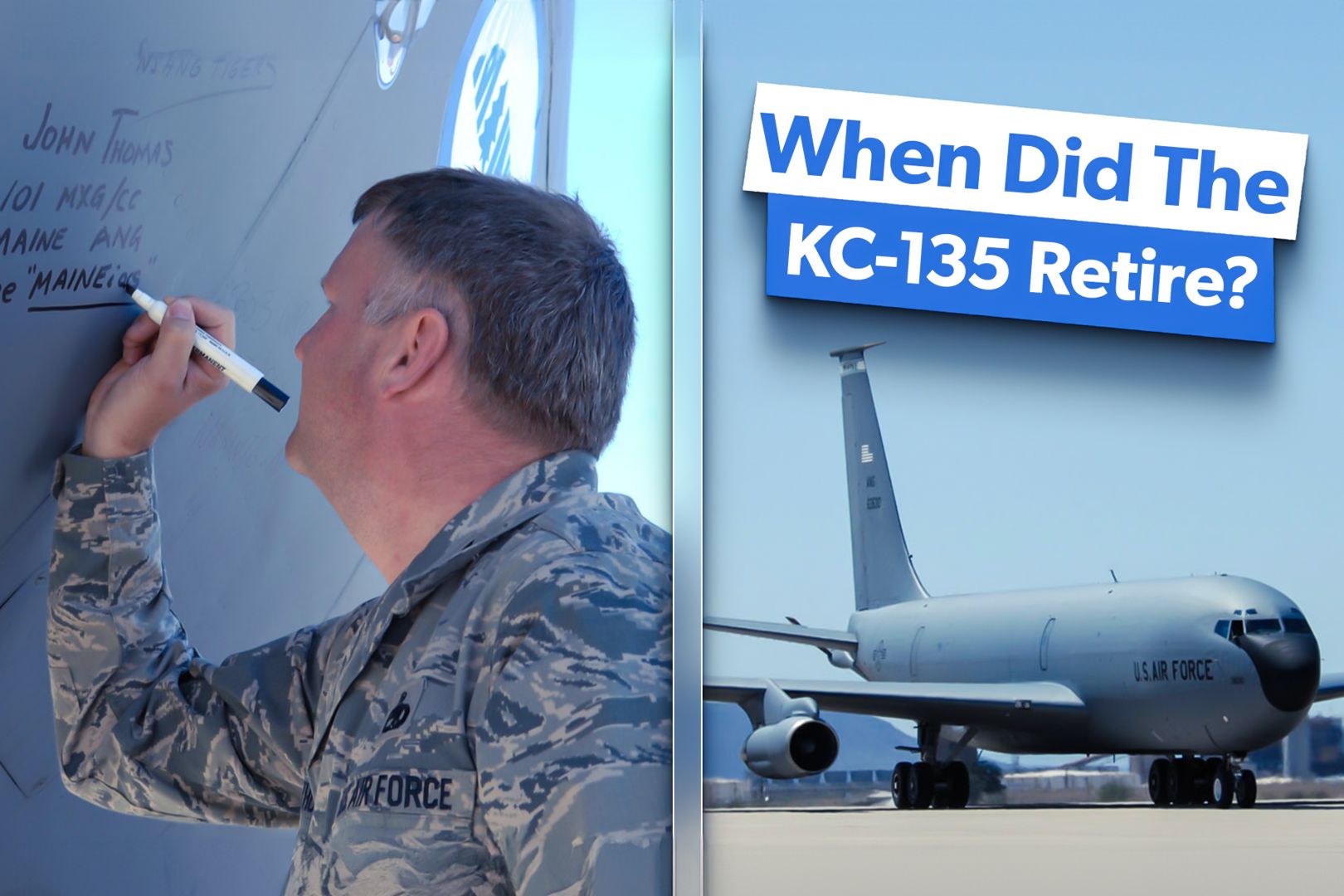
Related
When Did The KC-135 Retire?
The KC-135 was part of a quintet of still-serving US military planes with a service record of 50+ years as of 2022. But she’s finally retiring.
Angry that their aircraft did not win, Boeing protested the move, citing irregularities in the bidding process. After an investigation, the United States Government Accountability Office agreed with Boeing. Now, having to send out another Request For Proposals (RFP), the USAF slightly revised the requirements for the KC-X program.
Airbus partnered with Airbus partnered with Northrop Grumman to offer the Airbus A330 MRTT, the tanker version of the A330, while Boeing put forward a tanker version of its Boeing 767-200LRF (Long Range Freighter).
After properly evaluating all the proposals, the USAF announced in February 2011 that it had selected the Boeing KC-46 to replace the KC-135 Stratotanker. What would eventually be called the Boeing KC-46 Pegasus made its maiden flight on December 28, 2014, and successfully refueled an aircraft for the first time in January 2016.
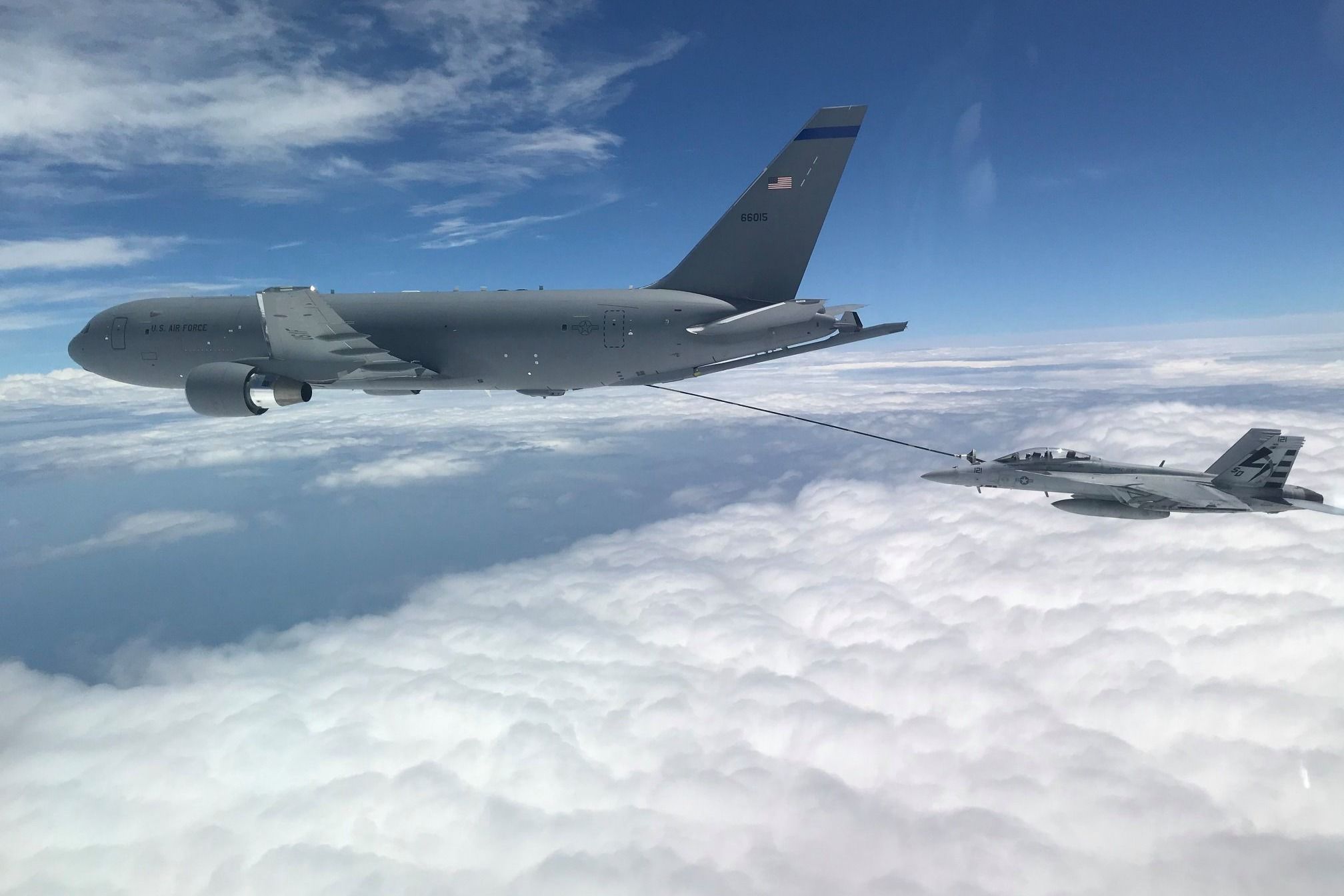
Related
How The USAF Overcame Issues With The Boeing KC-46 Pegasus
A main problem with the KC-46 was the refueling boom vision system.
Delays, cost overruns, and refueling boom problems delayed the KC-46’s delivery to the USAF. The first two KC-46s were delivered to the 22d Air Refueling Wing at McConnell AFB in Kansas on January 25, 2019. Because the USAF requires a large tanker fleet, the KC-135 Stratotanker will remain in service for at least another decade.

